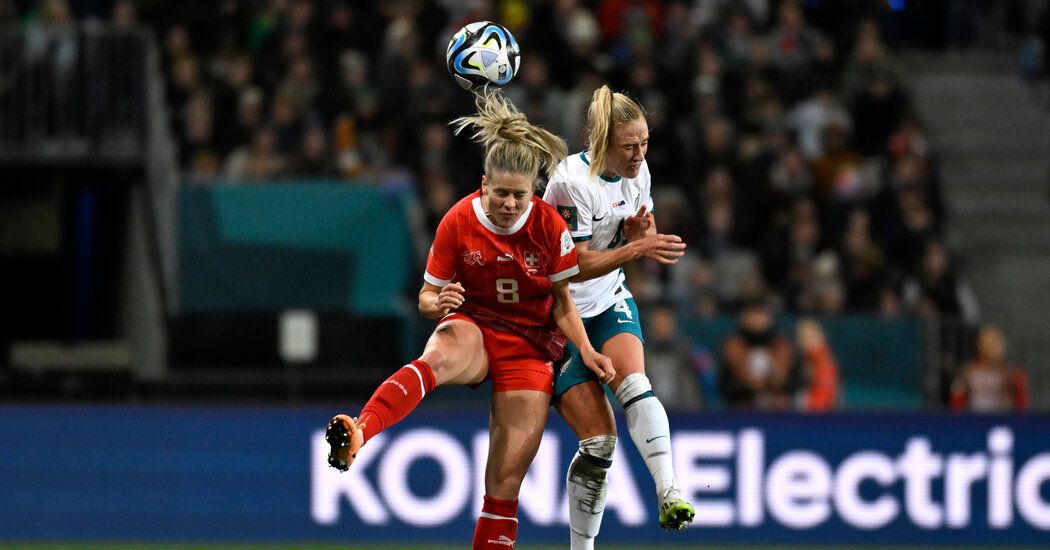The Co-Host New Zealand is Out of the Tournament
Image Morocco’s Nouhaila Benzina is the first player to compete in the Women’s World Cup while wearing a hijab. Credit... James Elsby/Associated Press
Nouhaila Benzina, a 25-year-old defender for a pioneering Morocco team appearing in its first World Cup, became the first player to wear a hijab in the tournament when she started her team’s 1-0 victory against South Korea on Sunday.
Morocco’s presence at the Women’s World Cup already has yielded a string of notable moments. It is the first North African team to qualify for the field, as well as the first from a majority Arab nation. And its first victory was a monumental achievement that kept alive its hopes for something even bigger: a place in the knockout stages.
But when it announced a starting lineup against South Korea that included Benzina, who has worn an Islamic head scarf in matches for years, it marked a significant milestone for the sport after years of disagreement about whether girls and women should be allowed to compete while wearing hijabs.
Clad in a white head scarf and white leggings under her white uniform, Benzina quietly went about her warm-up routine with her team and then disappeared into a huddle with the other starters in the moments before kickoff. Within minutes, she had blended into the fabric of the match, shouldering off attacks and challenging for headers. Ten minutes into the second half, she nearly scored herself when a poor clearance by Korea’s goalkeeper on a corner kick gifted her a shot inside the penalty area. Nouhaila Benzina does well to get on the end of it but can't find the back of the net 🇲🇦 pic.twitter.com/C6E2xl1yUa — FOX Soccer (@FOXSoccer) July 30, 2023 A decade ago, Arab countries, led by Prince Ali bin Hussain, the head of Jordan’s soccer federation, successfully fought against a prohibition on hijabs in soccer. Arab officials and players had argued that outlawing headscarves would limit the participation of young girls and women in the sport, particularly in Arab countries where hijabs are a common feature of public life. Soccer’s governing body, FIFA, eventually lifted the hijab ban, which had been in place on the grounds that head coverings exposed players to risk of injury, though France has moved recently to reinstate it. France’s top court in June backed a prohibition on hijabs by France’s soccer federation on the grounds that headscarves were at odds with France’s secular traditions. Several players on the Moroccan squad were born or raised in France, but Benzina plays for a club team in Morocco. She is the only player on Morocco’s team who wears a hijab in matches. When Sunday’s game ended, and her teammates poured onto the field to dance and celebrate, she dropped to her back on the grass and held her head in her hands. Her day had, somehow, gotten even more memorable.
Show more
Source: The New York Times


